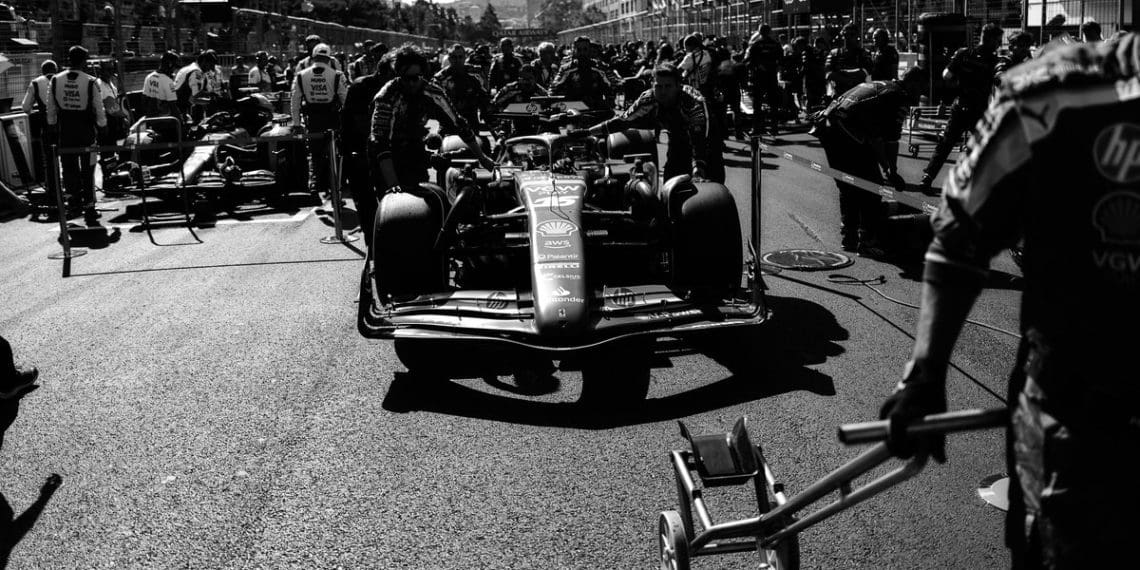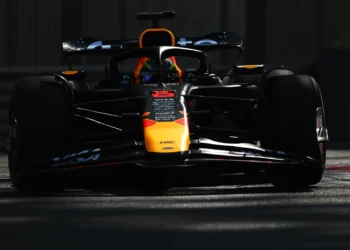Formula 1’s development war has taken a dramatic turn, shifting from the linear progression of past seasons to a more uncertain and stuttering battle. Once, teams could add downforce almost endlessly under previous regulations, but today’s teams are running into limitations that make steady progress elusive. While lap times continue to improve, the path to success has become more fraught, with fewer major upgrades yielding consistent results.
McLaren’s Dominance and Red Bull’s Decline
McLaren has emerged as the most consistent and competitive team on the grid, largely due to a series of major upgrades introduced over the last 18 months. These upgrades, including those in Azerbaijan, Austria, and Singapore last year, as well as Miami this year, have solidified McLaren’s status as the team to beat. The result is the strongest all-around package, capable of delivering results on a wide range of circuits.
However, not all teams have fared so well. Red Bull, last year’s dominant force, has stumbled, facing simulation-to-track correlation issues that have hampered their development. Ferrari, too, has struggled, with its floor update from the Spanish Grand Prix causing porpoising problems. Teams across the field have encountered similar issues, with development paths that either fail to translate to on-track performance or introduce new challenges.
Why the Struggles?
The current F1 regulations focus on running the cars as low and stiff as possible to generate maximum downforce. While producing downforce at low ride heights is technically straightforward, the challenge lies in preventing the floor from hitting the ground. This becomes difficult to simulate accurately, as the closer the car is to the track surface, the more exponentially the downforce increases, making the risk of bottoming out or porpoising more severe.
Porpoising, a term many F1 fans became familiar with in 2022, occurs when airflow under the car stalls, causing the car to rise and fall repeatedly. Managing this aerodynamic phenomenon is one of the key hurdles teams face. The delicate balance between generating enough downforce without causing instability has made these cars harder to perfect than previous generations.
Another challenge lies in maintaining a stable mechanical platform. At low speeds, the car naturally rides higher due to reduced downforce, which means teams need to design systems that keep the car low at all speeds without compromising its performance at higher speeds. Mercedes’ technical director, James Allison, has noted that this has created a much more intimate relationship between the car’s mechanical and aerodynamic performance, making it harder to design purely around aerodynamics as teams could in the past.
Flexibility and Consistency Challenges
Teams also struggle with ensuring their aero packages work across a wide range of speeds and conditions. A key issue has been generating enough downforce at the front end without destabilizing the car at higher speeds. This requires a flexible front wing design to manage load and balance, a difficult task given the current restrictions. Simplified bodywork and the elimination of complex bargeboards have made the cars more sensitive to yaw, or cornering at an angle, further complicating matters.
Fernando Alonso’s insight into the driving experience reveals just how delicate these cars are. He explains that sometimes driving at 90% yields better results than pushing to 100%, as going too hard can upset the car’s balance and lead to slower lap times. This suggests that the current cars are more prone to losing performance at the limit, an issue teams are still trying to solve.
External Limitations: Testing, Cost Cap, and Tyres
Beyond the inherent complexities of the car design, other external factors compound the difficulties teams face. The aerodynamic testing restrictions (ATR) limit the amount of wind tunnel and CFD time teams have, with the top-performing teams in the constructors’ standings receiving less time to develop their cars. For instance, while Aston Martin uses Mercedes’ wind tunnel, the team has fallen far behind its partner, showing that having the same facilities doesn’t always translate to success.
Track testing is also severely limited, with sprint weekends offering just one practice session, making it hard to assess and optimize new parts. Even during non-race events, such as tyre testing, teams are bound by strict regulations that prevent them from running their own development programs.
Then there’s the cost cap, which limits spending to around $135 million, further restricting the rate of development. Teams can’t manufacture as many new parts or hire additional staff to speed up their progress, forcing them to be more selective in their upgrades.
Finally, Pirelli’s tyres remain an unpredictable factor. Drivers like George Russell describe optimizing tyre performance as “black magic,” given the wide variability in grip based on conditions and preparation. Even small swings in tyre performance can have a dramatic impact on lap times, making it even harder to gauge the true effectiveness of a team’s development efforts.
The Complexity of Development in Modern F1
The result is a development race that’s more complex, uncertain, and prone to setbacks than ever before. The combination of restrictive regulations, unpredictable aero effects, and external factors like the cost cap and testing limitations has made it difficult for teams to make consistent progress. As a result, weekends are now more unpredictable, with small performance gains or losses potentially swinging a team’s competitive position dramatically.
The 2024 season is a testament to how F1’s development war has evolved. Teams must now navigate a minefield of technical challenges, all while staying within tight financial and regulatory constraints. Those that can master this complex landscape, like McLaren, will rise to the top, while others, like Red Bull and Ferrari, struggle to keep pace.









